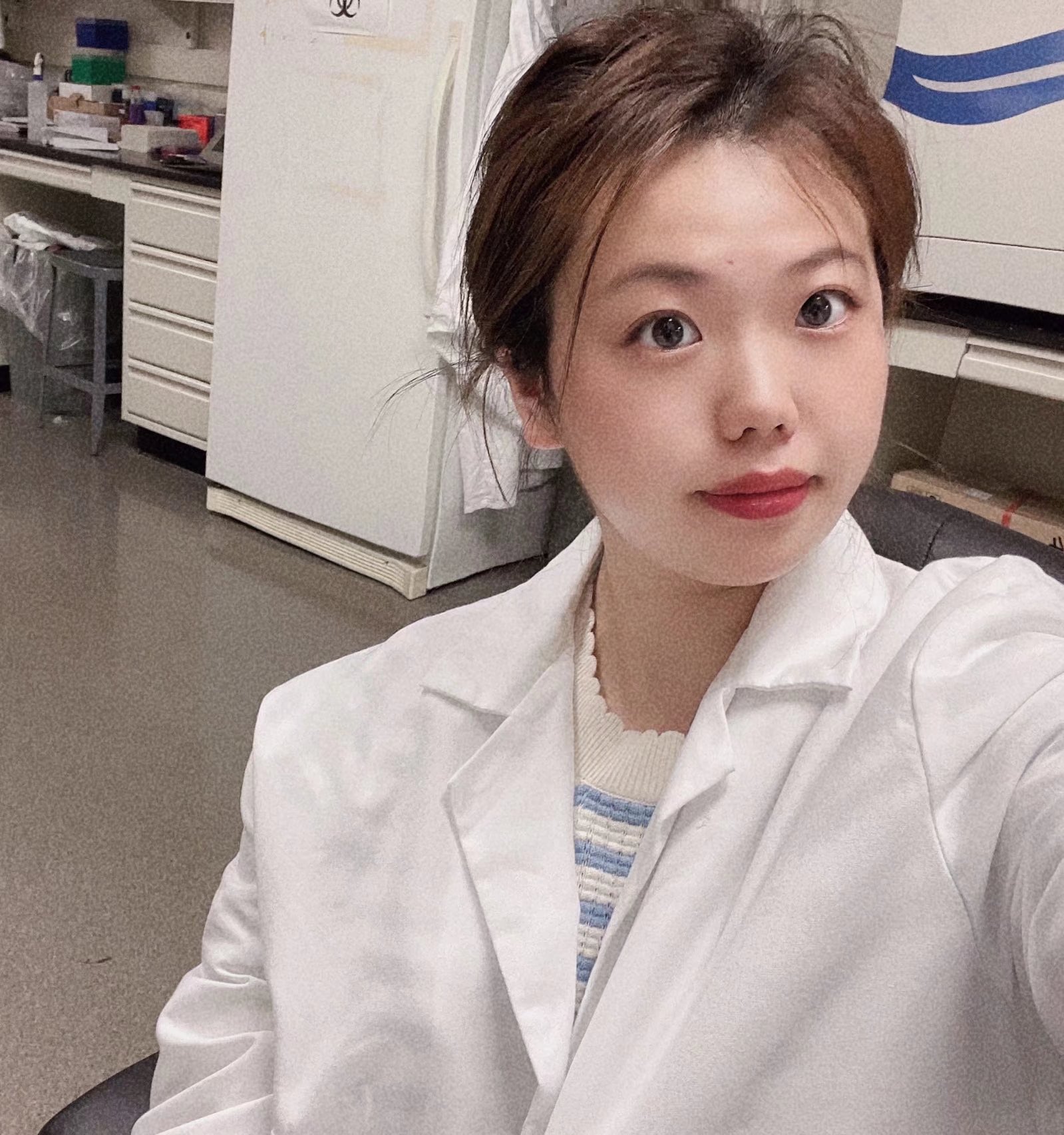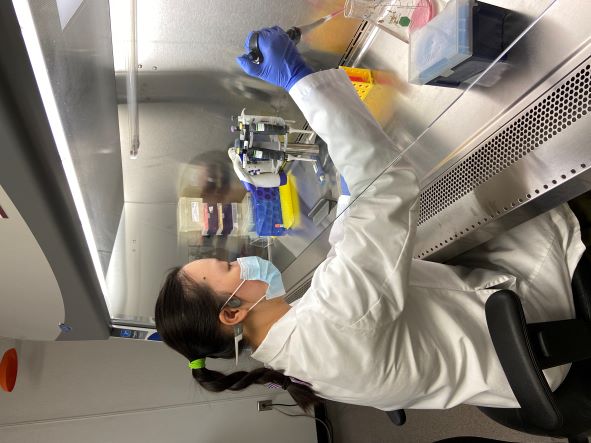Discovering a new purpose for protein from beef
Beef products such as ground beef and steak can provide one with nearly enough protein needed for one day. According to the USDA, one cup of cooked ground beef has 32 grams of protein, and a steak has between 40-70 grams of protein depending on the size, while the recommended dietary allowance of protein is 46 grams daily for women and 56 grams daily for men.
Two graduate students at Kansas State University are researching a way to use protein from beef in a unique way beyond directly consuming beef products such as ground beef and steak.
 Shan Xu is from Lu’an, China in Anhui province. She began her college career at Anhui University of Chinese Medicine where she received her Bachelor of Nursing. She transferred to K-State in 2018 and graduated in May 2021 with a Bachelor of Science in human nutrition. She decided to remain at K-State for further education and is currently pursuing her Master of Science in nutrition, dietetics and sensory sciences with hopes to graduate in May 2023.
Shan Xu is from Lu’an, China in Anhui province. She began her college career at Anhui University of Chinese Medicine where she received her Bachelor of Nursing. She transferred to K-State in 2018 and graduated in May 2021 with a Bachelor of Science in human nutrition. She decided to remain at K-State for further education and is currently pursuing her Master of Science in nutrition, dietetics and sensory sciences with hopes to graduate in May 2023.
Xu said that she is very thankful for Weiqun Wang, professor of food, nutrition, dietetics and health, and the positive impact he’s had on her research. Wang taught many of Xu’s classes and has guided her through her research, influencing both her education and career aspirations by pushing her and believing in her.
When Xu is finished with her education she plans to return to China to be a professor.
Quan Li is from Zhengzhou, China, the capital city of Henan province, an important agricultural producer. She holds a Bachelor of Food Science and Engineering from Henan University of Technology and has two degrees from K-State — a Bachelor of Science in bakery science and management along with a Master of Science in grain science. After graduating with her master’s in 2017, Li decided to continue at K-State to pursue a doctorate in biological and agricultural engineering, which she hopes to complete in the summer of 2023.
Li has studied and done research under the supervision of Xiuzhi Susan Sun for most of her time at K-State. Sun is a university distinguished professor of grain science and industry, as well as ancillary professor in biological and agricultural engineering. She also leads the Biomaterials and Technology Lab.
Li said she initially chose to get involved in Sun’s lab because of her fascination with exploring the mechanisms behind food production and has enjoyed working in the lab ever since. When Li finishes her education at K-State, she would like to continue doing research as a faculty member of a university, preferably in her hometown of Zhengzhou.
Xu and Li have been working together under the supervision of Sun — lead principal investigator — and Weiqun Wang on a project titled, “Affordable Regenerative Beef Proteins from Cattle Blood Waste for Innovative Food Proteins.” The project was supported by the K-State Global Food Systems Initiative Seed Grant Program for fiscal year 2022.
Donghai Wang, professor of biological and agricultural engineering and John Jaeger, professor of animal sciences and industry and beef cattle scientist, are also part of this research team. In January 2022,
the team was awarded with $605,600 by the U.S. Department of Agriculture National Institute of Food and Agriculture, or USDA-NIFA, to continue their work for three years.
The goal of the project is to develop affordable regenerative beef proteins, or RBPs, from cattle blood waste and fat tissues normally left behind in slaughterhouses by reprogramming them into stem cells that grow indefinitely. They will then use those cells to produce high quality proteins that can be used as food additives.
Xu is specifically focusing on determining the nutritional value of the RBPs by looking at their protein content, amino acid composition and protein digestibility, then comparing that with the protein content in commercial beef products. Since cattle self-renewing induced pluripotent stem cells, or iPSCs have not been available, they have been using human iPSCs instead. They have developed technologies for converting human blood into renewable cells for the production of regenerative human proteins, or RHP, in Sun’s lab.
“I was very surprised that the essential amino acids of the RHP were higher than that of the real human muscle protein reported in literature,” Xu said. She also expects that the RBP should have higher essential amino acid profiles than the real beef proteins as well.

Li, on the other hand, has focused on growing the cells using a 3D suspension culture system and hydrogel that were previously developed in Sun’s lab. The cell culture mediums are one of the highest costs, so she wanted to see if the cells and cultured mediums could be reused. While she was initially worried that the buildup of waste released by the cells would have a harmful effect on them as they grew, she discovered that the cultured cells and mediums can be reused safely.
One of the next steps, Li pointed out is to scale up this process from the lab setting to a cost-effective industrial setting.
“Though it’s simply that you use more cells and materials, there are more things to consider,” Li said. “In the lab scale we have several milliliters of material, but in industry you are usually dealing with a big tank that has tons of materials in there, so the pressure and whole environment for the cells are different and that may cause some problems when moving to a larger scale. That’s something we need to study further.”
Xu said this novel food material is important because it could become a good source of protein to help feed the world in the future amidst a rapidly growing population.
“That is very interesting and meaningful for our project,” she said.